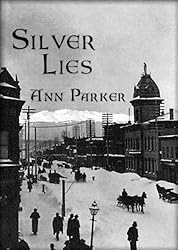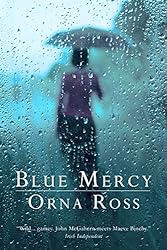
I loved Mrs Jordan’s Profession: The Story of a Great Actress and a King, Claire Tomalin’s biography of Dora Jordan. It is both well researched and well written making it easy to read despite being packed with information, brilliantly bringing the late 18th and early 19th centuries to life as she tells the story of Dora and her relationship with the Duke of Clarence, later King William IV . It’s based on material in the Royal Archives at Windsor; letters from Dora held at the Huntingdon Library, San Merino, California; various private family papers, letters and memorabilia, as well as numerous secondary sources from national and local libraries. The resulting biography took her several years to complete.
Much of the information about Dora is taken from her own letters, written over 25 years, to her children and friends and many hundreds of those to the Duke of Clarence, the father of ten of her children (the FitzClarences) have survived. She was a remarkably strong character and an incomparable actress.
William, the Duke of Clarence and Dora Jordan were born into very different families – born in 1765 he was the third son of George III and Queen Charlotte, and she was born in 1761, the daughter of Francis and Grace who although not legally married lived together as Mr and Mrs Bland. He was not expected to succeed to the throne and as a boy served in the navy, later he was given a dukedom, an income and an estate. She became an actress, known as ‘Mrs Jordan’, although there was never a Mr Jordan. She made her stage debut in 1777 at the age of 15 and her first Drury Lane appearance in 1785. The two met and she became his mistress in 1790, eventually living together at Bushy House in Middlesex. Their relationship was a happy one until, as the years went by, William was put under pressure to find a suitable wife and, of course, marriage to Dora was out of the question. They separated in 1811 and she was heart broken.
There is so much in this book that fascinated me. The attacks in the press on their relationship were vicious and there were storms of abuse – as an actress and a prince they could not have private lives and the journalists and cartoonists were savage in their portrayal of the couple. The cartoons in particular amazed me. ‘Jordan’ was a common term for a chamber-pot, so her name came in very handily, and became an instantly recognisable visual symbol:
Sometimes it was put over the Duke’s head; sometimes he was shown standing in it, with her prettily draped round the edge, naked and mermaid-like. In other drawings the pot reverted to its domestic function under the bed; the words ‘Public jordan open to all parties’ were written round one of these. The most effective and cruellest was Gillray’s simple picture showing Dora as a giant chamber-pot, cracked and with a vagina-shaped hole into which the figure of William is disappearing, giving a nautical shout of pleasure as he does so. His braided coat is hanging on a peg to one side and her ankles and feet in dainty slippers appear below the pot. The caption reads ‘The Lubber’s Hole, alias the Cracked Jordan’, (page 123)
Dora comes across as a very likeable person, hard working, and devoted to her family. She was a talented and probably the most popular actress of the time in Britain, based at the Theatre Royal, Drury Lane and also appearing in theatres throughout the country, acting throughout her pregnancies and often taking a baby with her on tour. Claire Tomalin writes
She was the best-loved and most admired comic actress of her time, hailed by fellow actors, critics and public alike as a uniquely gifted performer, fully the equal in comedy to Mrs Siddons in tragedy: for several decades they were generally referred to as the Muses of Comedy and tragedy. (page 3)
After she and the Duke separated the debts incurred by a son-in-law drawn on her account forced her to live abroad until they could be cleared, but she sank into illness and despair and died near Paris in 1816.
William succeeded to the throne in 1830, after the death of his older brother, George IV. One of the first acts of his reign was to commission a sculpture – he wanted a life-size representation of Dora, She had been dead for fifteen years, so Francis Chantrey, the sculptor worked from portraits, finishing it in 1834. William’s intention was to place the statue in Westminster Abbey, but the Dean of Westminster refused to allow it and it remained in Chantrey’s studio. Eventually, after passing through several hands, the fifth Earl of Munster bequeathed it to the Queen and it is now in Buckingham Palace among the portraits of kings and queens in the Picture Gallery.

Like all good biographies Mrs Jordan’s Profession has an extensive bibliography, additional notes and an index. There are several photographs, family trees of and an appendix of Mrs Jordan’s Roles.
- Paperback: 422 pages
- Publisher: Penguin 1995
- Language: English
- ISBN-13: 978-0140159233
- Source: I bought the book
Reading Challenges: Mount TBR Reading Challenge 2015, Non Fiction Reading Challenge 2015, TBR Pile Challenge 2015.






